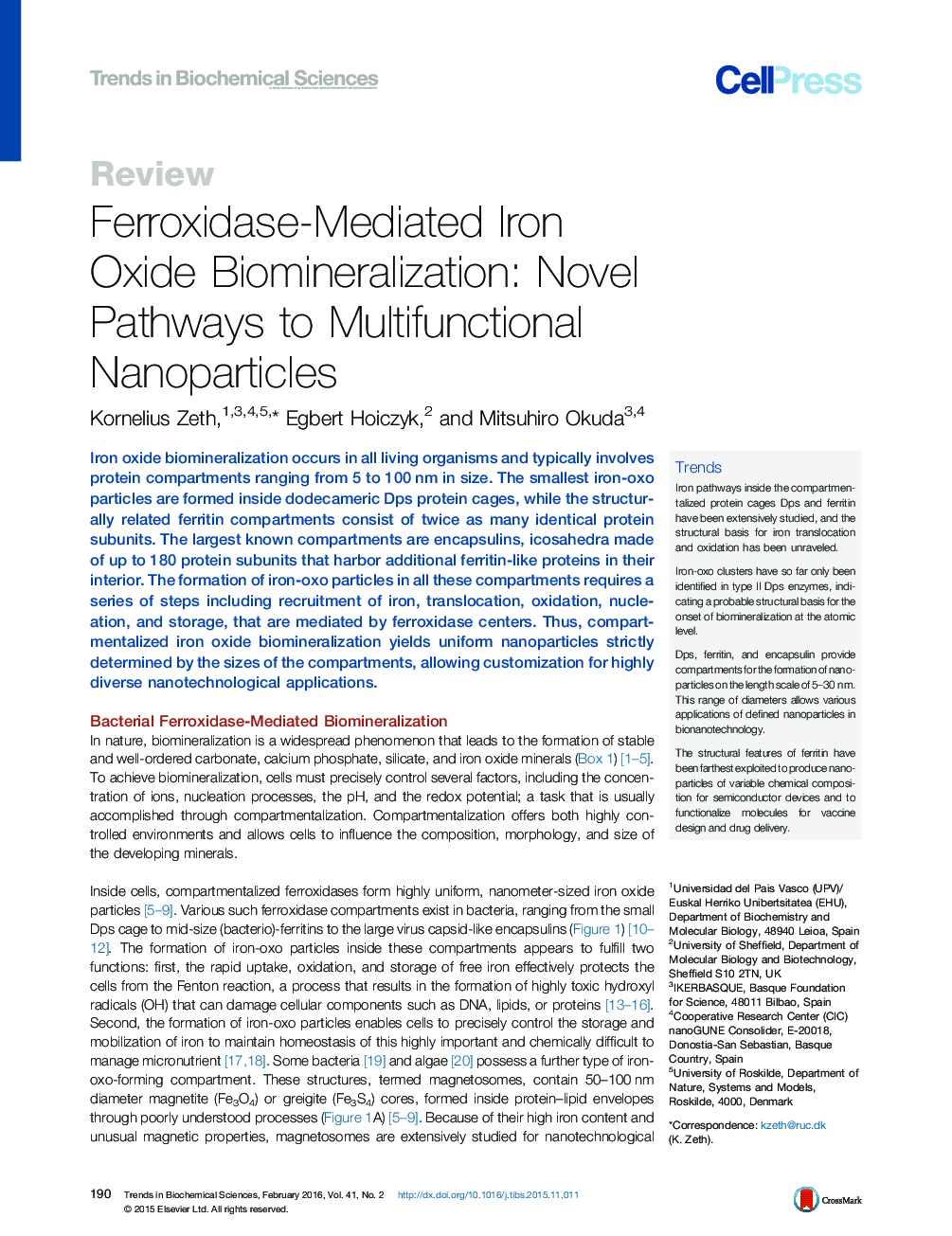| Article ID | Journal | Published Year | Pages | File Type |
|---|---|---|---|---|
| 2030492 | Trends in Biochemical Sciences | 2016 | 14 Pages |
Abstract
Iron oxide biomineralization occurs in all living organisms and typically involves protein compartments ranging from 5 to 100Â nm in size. The smallest iron-oxo particles are formed inside dodecameric Dps protein cages, while the structurally related ferritin compartments consist of twice as many identical protein subunits. The largest known compartments are encapsulins, icosahedra made of up to 180 protein subunits that harbor additional ferritin-like proteins in their interior. The formation of iron-oxo particles in all these compartments requires a series of steps including recruitment of iron, translocation, oxidation, nucleation, and storage, that are mediated by ferroxidase centers. Thus, compartmentalized iron oxide biomineralization yields uniform nanoparticles strictly determined by the sizes of the compartments, allowing customization for highly diverse nanotechnological applications.
Related Topics
Life Sciences
Biochemistry, Genetics and Molecular Biology
Biochemistry
Authors
Kornelius Zeth, Egbert Hoiczyk, Mitsuhiro Okuda,
